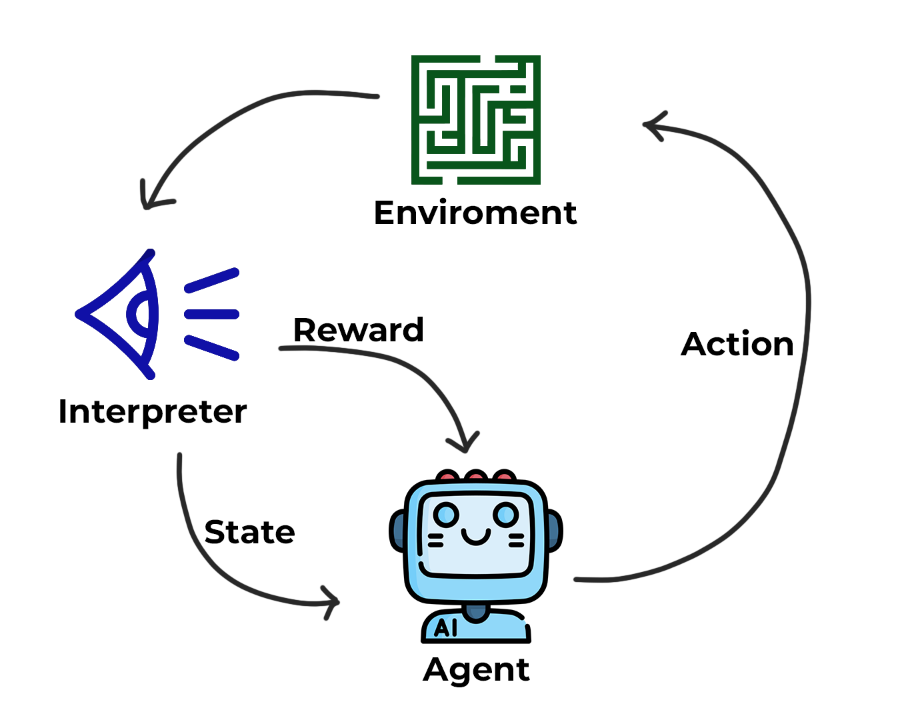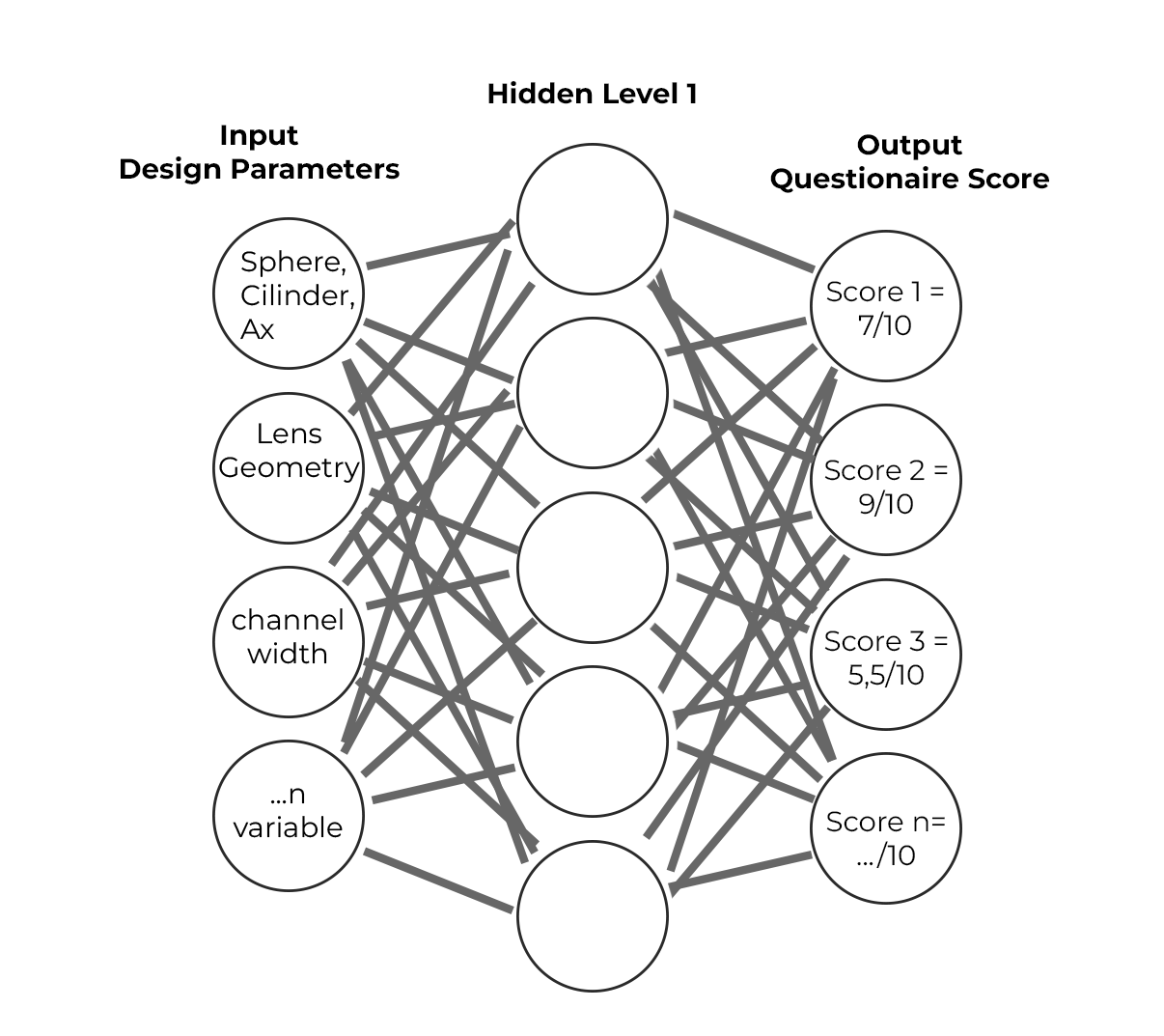
9 minute read
AI and machine learning algorithms
AI and machine learning algorithms
Artificial intelligence (AI) is revolutionizing numerous industries, and there are numerous approaches to design these algorithms. How can these technologies be implemented in the design of progressive freeform lenses? By Gaetano Volpe and Pasquale Fanelli
In today's rapidly evolving technological landscape, AI has become an integral part of our daily lives. In recent years, this technology has been implemented in smartphones, voice assistants, in customized search results of popular streaming platforms, in social networks and so forth. But what exactly is AI?
Background
The term AI refers to the machines ability to perform tasks that typically require human intelligence, such as visual perception, speech recognition, decision-making, and language translation. To make these technologies work, it is necessary to “teach” machines how to perform these tasks successfully, through developing specific algorithms: this process is called machine learning and is a subset of AI research. As we explore the world of machine learning, one might wonder: what are the most used algorithms for programming AI software? What strategies are they based on? What is the role of AI in the design of progressive ophthalmic lenses? Is an AI revolution taking place, as in many other sectors?
This article aims to provide a general overview of the main types of machine learning algorithms, including “supervised learning ” , “u nsupervised learning ” , “reinforcement learning ”, and “multitask learning”, and aims to propose a use scenario in progressive addition lenses (PAL) engineering.
Supervised learning
Supervised learning is a type of machine learning where the algorithm is trained on a labelled dataset, which means that the input data is paired with the correct output. In simpler terms, the programmer provides the algorithm with both the source information (input) and the precise result to be obtained (output) like a teacher guiding a student through a learning process. The teacher provides the student with examples of inputs and their corresponding correct outputs, allowing the student to learn the relationship between the two. The algorithm's goal is to learn the correlation from inputs information to outputs one, allowing it to make predictions on new, unseen data. Supervised learning is widely used in various applications, such as image recognition, speech recognition, and natural language processing. For example, in image recognition, a supervised learning algorithm might be trained on a series of images (dataset) labelled as either “cat” or “dog”. After learning the features that distinguish cats from dogs, the algorithm can then classify new, unlabelled images as either cats or dogs.
Unsupervised learning
Unlike supervised learning, unsupervised learning algorithms work with unlabelled dataset, meaning that the input data does not have any associated output. To put it simply, unsupervised learning is like a student looking for connections between information while studying a new subject, without any guidance from a teacher.
The goal of unsupervised learning is to discover hidden patterns or structures within the data. This type of learning is particularly useful for tasks such as: grouping similar data together based on their inherent characteristics or patterns (called clustering); or identifying errors, unusual patterns, rare events in a dataset (called anomaly detection).
An example of employing this type of algorithm might be a company that trying to group customers according to purchasing behavior. Imagine a dataset containing rough information about customers' shopping habits: an unsupervised learning algorithm could search patterns in this dataset to group customers with similar purchasing behaviors, allowing businesses to tailor their marketing strategies accordingly. It isn’t appropriate to use a supervised algorithm in this case as we don't know the purchasing groups' characteristics (output) when starting the analysis.
Reinforcement learning
Reinforcement learning is a type of machine learning where a decision-maker software (called agent) learns to make decisions by interacting with a controlled environment. Think of reinforcement learning as a trial-anderror process, where the agent learns from its experiences and it adjusts its choices accordingly, improving its decision-making skills.
One way to structure this type of algorithm is to design a reward system: the agent will be rewarded in the case of a correct answer and will receive a penalty in the case of a wrong answer. His task is to maximize the reward.
A classic example of reinforcement learning is teaching a robot to navigate through a maze (Fig. 1). The robot receives a reward for reaching the goal and a penalty for hitting a wall or taking too long. Over time, the robot learns the optimal path to exit the maze by maximizing its cumulative reward. Reinforcement learning has been successfully applied to various domains, such as robotics, game playing, and recommendation systems.
Multitask learning
Multitask learning is a machine learning approach where a single model is trained to perform multiple tasks simultaneously. Imagine a student studying multiple subjects at once, leveraging the knowledge gained in one subject to improve their understanding of another. The idea behind multitask learning is that the model can leverage shared knowledge across tasks, leading to improved performance and generalization.
For example, a multitask learning model could be trained on this two tasks: edge detection and shape recognition. The model can use the information gained in each assignment to improve the performance in both tasks. This approach has been applied to various domains, such as computer vision, natural language processing, and drug discovery.

Neural networks
Most of these techniques leverage a software framework called neural network also known as Artificial Neural Networks (ANNs). The neural network model is inspired by the functioning of biological brain networks. In fact, in the brain each neuron cell has an input and output signal, and all signals are aggregated according to their strength. Similarly, in ANNs each neuron or “node” takes an input and generates an output, and the outputs of all nodes are computed based on a property called “weight”, that represent the importance of the single node.
Using this model, one can easily increase the operation complexity at each layer of neurons, solving very complex tasks otherwise unsolvable with linear classical algorithms, just as it happens in our brain.
In the visual cerebral cortex, in fact, many simple neuronal cells are all connected to a complex cell, which computes their information based on their strength. Many complex cells are then connected to one hyper-complex cell, creating a hierarchical structure with levels that increases the complexity of visual processing at each step (like an upside-down tree).
When the number of hierarchical levels and the amount of initial information (dataset) increases significantly, the algorithm is called “deep neural networks” (or deep learning). Thanks to these characteristics, deep neural networks have achieved extraordinary accurate results in image classification, object detection, speech recognition, natural language processing, and more.
Machine learning algorithms in progressive freeform design optimization
Progressive freeform ophthalmic lenses are designed to provide a seamless transition between different focal lengths, offering clear vision at all distances for individuals with presbyopia. The production of a high-quality progressive lens requires a complex mathematical designing phase, where the lens surface is optimized to minimize optical aberrations and maximize visual performance.
Machine learning algorithms, particularly supervised learning, could be employed to model the complex relationship between lens parameters and visual performance.

A critical aspect linked to progressive lenses is the final perception of the patient, as it cannot be measured.
Over the years of progressive designs development, satisfaction questionnaires were used by companies and researchers in which the end-user was asked to rate the degree of comfort at different viewing distances (example: far, intermediate, distance) on a numerical scale. Using this data, companies were able to identify the best designs and understand where to improve, but the process was time consuming and manual.
The volume of data collected from the questionnaires can be used, coupled with the lens design parameters (optical power, mounting and position of ware parameters), as an input dataset. This dataset can then be implemented in a neural network and the network can be trained to predict customer satisfaction from the input data. The questionnaire outcome, representing the wearer's satisfaction, is the output data of this neural network.
Furthermore, this type of neural network can be used to optimize some of the input parameters, thus improving the lens design as well. The algorithm tries to adjust the input parameters to maximize the output (client satisfaction) in a supervised environment. If the collection of feedback from customers continues, the network can keep learning over time and improve its predictions, also improving the efficiency in optimizing design parameters.
This neural network is schematized in figure 2, in which you can distinguish the input dataset (manufacturing parameters) and the output (result of the questionnaires). Hidden level features the trial-and-error mathematical algorithms that aim to maximize the outcome.
Conclusion
We explored the fundamental concepts behind artificial intelligence and the key types of machine learning strategies. This provides an idea of the structure of these complex algorithms and how it is possible to
train a machine to perform typically human tasks such as image recognition, speech recognition, natural language processing and so on.
Artificial neural networks are structured on the lines of biological ones and, combined with some of the learning models mentioned above, are widely used in the creation of AI tools. When the neural network becomes complex, with many layers of neurons and large datasets, one speaks of a deep neural network and the software can perform very complex tasks with greater accuracy.
Although there are no publications in the scientific literature on the application of these technologies in freeform lens design, we proposed a use case scenario.
This AI model, after being properly trained, can improve lens power map by changing the design parameters and automatically check in which cases you have the highest satisfaction score from the questionnaire (output). ◆
References:
Bishop, C. M. (2006). Pattern Recognition and Machine Learning. Springer. Hinton, G. E., & Salakhutdinov, R. R. (2006). Reducing the dimensionality of data with neural networks. Science, 313(5786), 504-507.
Sutton, R. S., & Barto, A. G. (2018). Reinforcement Learning: An Introduction. MIT Press.
Caruana, R. (1997). Multitask Learning. Machine Learning, 28(1), 41-75.


Picture: Emiliia/stock.adobe.com





